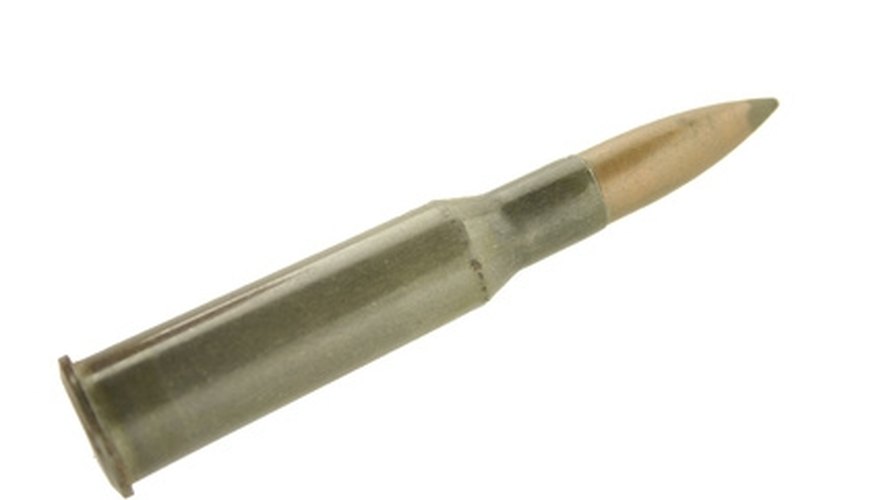
As most reloaders are aware, there are two basic types of rifle cartridge primers: Boxer and Berdan. Boxer primers contain a small metal anvil which works with the firing pin in the rifle to compress the priming compound, causing it to ignite. Berdan primers lack this anvil; the anvil is built into the cartridge case itself. This anvil in the cartridge case presents difficulties in removing the spent primer in preparation to repriming and reloading, so much so that most reloaders view Berdan primed brass as being non-reloadable. The problem is that the flash holes, which lead the flame from the primer into the powder charge within the case, are offset from center, as opposed to the Boxer-primed case, which has a single, central flash hole through which a pin centered in the case resizing die punches out the spent primer and its anvil.
Why bother?
Berdan primers, being simpler, are cheaper to produce than Boxer primers. This is the reason so many foreign ammunition makers use them, especially military surplus ammo. Berdan primers used to be available in the United States at cheaper prices than Boxer primers, as well. Since the early 1970s, however, this has changed; the law of supply and demand has driven the prices higher while simultaneously holding down the price of Boxer primers. This has had the result of making Berdan primers expensive and hard to find in the USA. There is really only one reason most reloaders would even consider reloading Berdan-primed cases anymore, and that is the unavailability or expense of Boxer-primed cases for a particular chambering. An example is the Russian 7.62 x 54R cartridge. While this has become a popular cartridge in the United States because of the ready availability of inexpensive Mosin Nagant bolt action military rifles, Boxer primed cases, while somewhat available, are still somewhat expensive and hard to find. To a frugal reloader, it is difficult to throw away a nice brass case just because it is Berdan primed, and replace it with an empty Boxer primed case that cost more than a loaded round that is Berdan primed.
Removing the fired Berdan primer
There are basically three ways to remove the spent Berdan primer. First, there are decap-only dies available that have one or two hardened steel pins to drive out the old primer, just like decapping a Boxer-primed case. Unlike a Boxer decapper, which has a single pin in the exact center, these pins are offset. This means the reloader has to turn the case by hand, feeling for the flash holes. This, coupled with the smaller diameter of the pins, makes pin breakage likely. Further, hole spacing can vary from one case manufacturer to another,which adds to the problem. Second, at least one reloading equipment manufacturer produces a tool which removes the primer from the outside of the case. It consists of a lever with a hook on one end for grabbing the rim of the case, and a hardened steel spike which digs into the primer so that it can be levered out. This tool is high quality and works better than a first glance would indicate, but the steel spike is a consumable part and must be replaced occasionally as it breaks or wears out. The third and final tool is the hydraulic decapper. These tools are fairly simple and, although they are commercially available, many reloaders build their own. Basically, the case is filled with water, after which a tightly-fitting plunger is inserted in the neck of the case and struck with a hammer; the resultant hydraulic pressure drives the primer out. There is also an improved version of this design wherein the entire case, with the exception of the head, is enclosed within a chamber, which is then similarly pressurized by means of a hammer and plunger. These hydraulic decappers are more time-consuming than the other two methods and also tend to be somewhat messy in operation, but some reloaders prefer them.
Repriming the case
Berdan primers, while not exactly the same size as Boxer type large rifle primers, are close enough that whatever the reloader normally uses for seating large rifle primers will also work fine for seating Berdan primers. Given the rarity and expense of Berdan primers, however, some reloaders choose to convert the cases to a Boxer configuration by chucking each case in a lathe and using a small end mill to remove the anvil, followed by drilling a new flash hole in the exact center. This is a questionable practice which may increase pressures or cause primers to back out upon firing, but it makes sense for the careful, well-equipped reloader because the case may henceforth be reloaded like any other Boxer-primed case.
References
- Surplus Rifle.com; Reloading Berdan Primed Brass
- The ABC's Of Reloading, 4th Edition; Dean A Grennell; 1988
Writer Bio
Since 2008 Tracy Underwood has been fulfilling a lifelong dream of writing professionally. He has written articles for Possumliving.com and Woodsloafing.com online, and in print for "Backwoodsman Magazine." Underwood holds an Amateur Extra license from the FCC. He received an Electronic Technician certificate from the U.S. Navy BE/E school, NTC Great Lakes.



